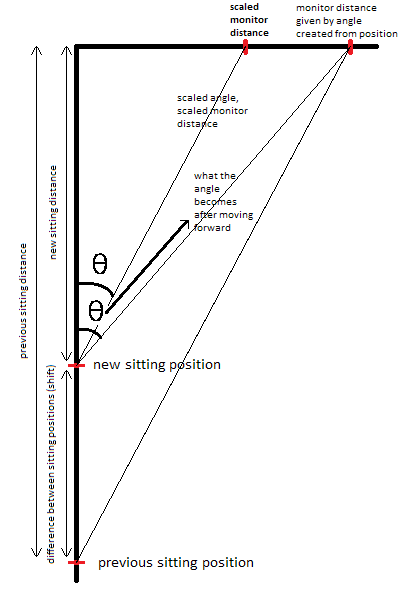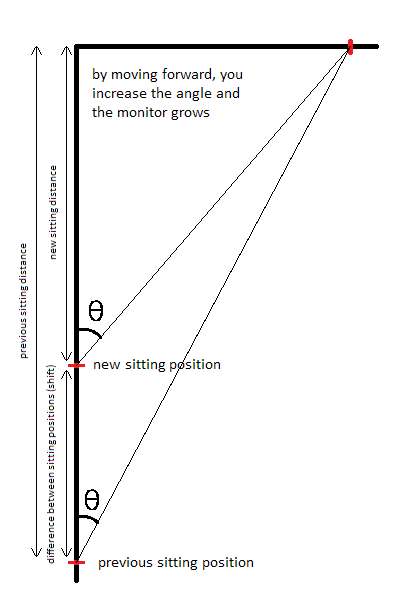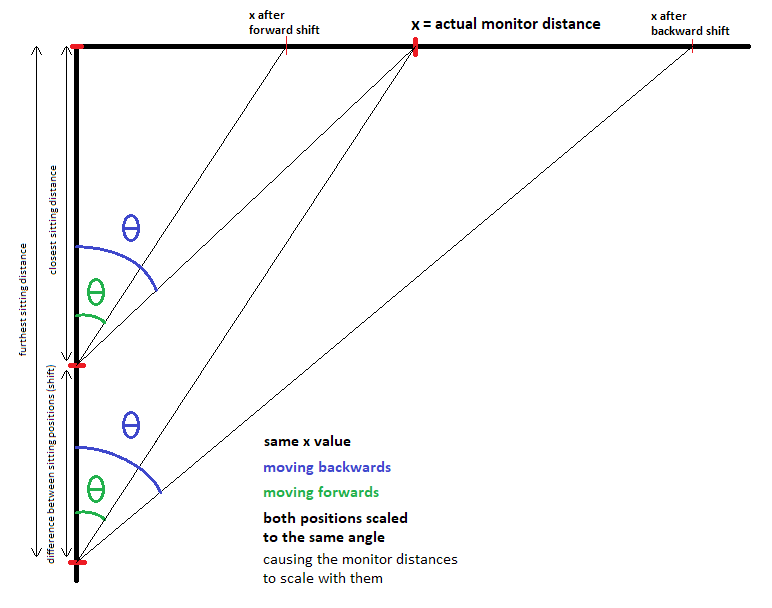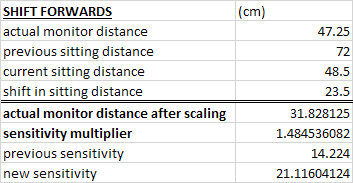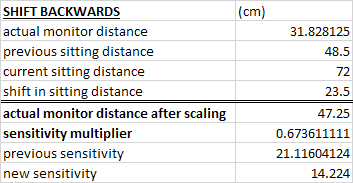Search the Community
Showing results for tags 'feature request'.
-
This has been an issue in a lot of games for me, but let's take Deep Rock Galactic where the max FOV in game is 120 multiplier, corresponding to 82.5 vertical FOV, but with a mod can be set to 125 which more closely matches the 86 vertical I want. In the past I could enter any FOV even beyond the supported range of a game and get accurate results, but as of some time back it spits out this warning: Honestly, the warning is good, but I still want to see the calculated results, just with a note next to it. This would also futureproof games for updates adding FOV options or increasing their range. At the very least please make this an option in "Advanced" mode
-
Hey I have a request for a feature in the calculator to be added. It's basically a (simple) formula that converts your 2D sensitivity depending on how far away you are sitting from the monitor. If you move forward your sensitivity will become too fast and if you move backwards your sensitivity will become too slow. You can test how the speed of your cursor feels by just positioning yourself at different distances from your monitor. It's very noticeable when sticking your eyes right next to your monitor and then comparing with how you normally sit. I think this would be useful because sometimes you get a different desk or you might move your PC to the living room and use the TV, but then you are now sitting either much closer or much further away and your sensitivity won't feel right. Here is a diagram explaining how sensitivity feels when you move forward: As you can see, the perceived distance of your monitor will change depending on where you are sitting. As you move forward your monitor will grow and as you move backwards your monitor will shrink. We can scale the monitor distance by applying the same angle as the previous position for the new position: Since the previous diagram only shows one direction of shift, here is another one showing both with extra labels: So after scaling either position, you can then use trigonometry to find the new monitor distance. Then once you know the new monitor distance you divide the old monitor distance with the new monitor distance to find the multiplier, which tells you by how much the monitor distance changed when you shifted. Then with this multiplier, you multiply your old 2D sensitivity to get your new sensitivity at your new sitting position. I know in the diagram it looks like the monitor distance is from the middle of the monitor to the edge of the monitor but it doesn't matter which points you use as they both scale the same, though I would recommend just using the monitor's edge to edge distance for simplification. Now I won't show you all my working, but I simplified it and came up with two formulas, one for shifting forward and one for shifting backward. I'm sure you could combine the two formulas with an if statement to figure out which direction you are shifting to. N = new monitor distance o = old monitor distance s = the distance shifted f = the furthest sitting distance Shifting forward: N = o - (o*s)/f Shifting backwards: N = (o*f)/(f-s) This is a little example I did in Excel: So that is all there is to it. I think it would be great to add to the calculator. If there is anything wrong or you need clarification I will be able to reply in Australian time.




